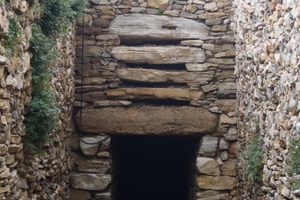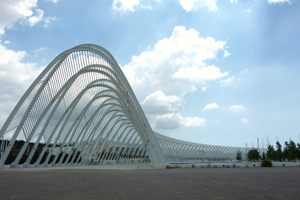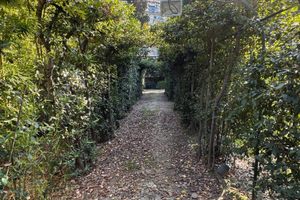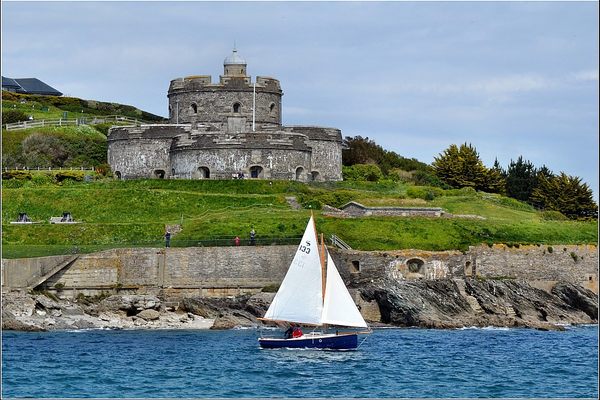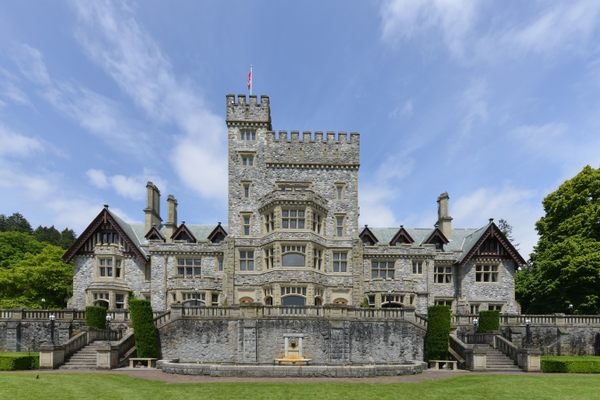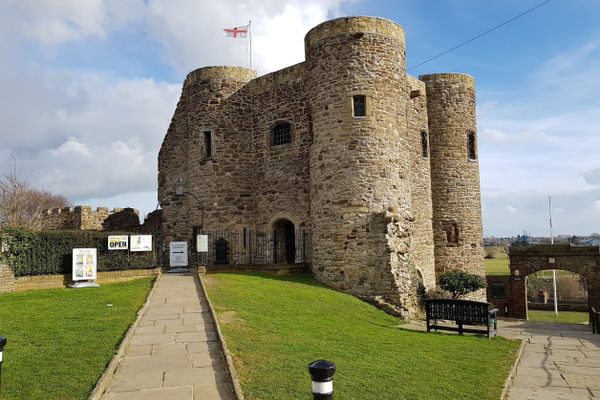About
When Queen Amalia arrived in Athens for the first time in 1837, she began exploring the area around the capital city. She enjoyed doing so on horseback and one day, near what is now known as Ano Liosia, she discovered the rich valley of the Cephissus River. Upon seeing a plantation on an old Ottoman feudal farm, Queen Amalia immediately expressed her desire to own the land to her husband King Otto.
King Otto succumbed to the Queens Amalia's desires and purchased 30 hectares of land. She immediately began overseeing the project. She had pine, cypress, olive, pistachio, almond, and additional fruit trees planted and a large herb garden built. The grounds were landscaped with lawns, paths, and fountains. There were ancient ruins including statues, sarcophagi, and other relics brought in as décor. There were domestic, farm, and show animals on the property. Most importantly at the time, there were stables for the queen's royal horses.
Queen Amalia then commissioned a summer villa be built on the property similar to the Ηochenschwangau in Bavaria where Otto was born. It was decided the villa would be built on the site of a previous tower that sat on the site. An impressive, Gothic-style building that resembled a small castle was built.
The finest materials were used and it was decorated with great detail. Arched windows let in natural light during the day and Gothic fixtures provided light after dark. The wooden parquet flooring was made from different kinds of wood and placed in the Munich style, similar to that in the Royal Palace in Athens and palaces in Bavaria. This wood flooring is considered by experts to be among the best preserved in Greece. The walls were painted in vivid blue, red, and gold with several seals and crests of the royal houses of Greece, Bavaria, and Oldenburg in the building. There is colorful and detailed ceiling art in every room. No bathroom or kitchen was in the tower—these were located in other buildings, which still stand.
The Queen's Tower was unveiled on August 13, 1854, the birthday of King Ludwig of Bavaria, King Otto's father. King Otto, King Ludwig, Greek Prime Minister Mavrokordatos, and numerous other dignitaries attended the event, which was billed as the social event of the year.
In 1857, Amalia commissioned the building of a small hill to add to the six existing hills on the property. Much earth was moved and at the completion of the project Amelia referred to the property as Eptalofos, which translates to “seven hills.” She gave each of the hills names of the Argonauts from Greek mythology.
Land purchases over time grew the property to 250 hectares by 1862. At the time King Otto was deposed, the property was returned to the Greek government and he and Queen Amalia returned to Bavaria. Despite spending a significant amount of time at Eptalofos, Queen Amalia never stayed overnight and King Otto, never showing great enthusiasm for the project, only visited on the day of the dedication.
Despite decades of passing through various hands and surviving earthquakes and the elements, the tower, buildings, stables, and grounds are all in excellent condition with the exception of the palm trees, as many have succumbed to the red weevil. The last original piece of pre-World War II furniture is on display in the tower, as are numerous other artifacts including the original keys used by Queen Amalia. The stables no longer house giraffes, but they do house descendants of the royal horses. Grapes from the vineyards planted by later owners are used to make a small amount of wine bottled at the boutique winery on property. Honey from the bee-keeping operation and oil and paste from the olive press operation are distributed to the workers (many of which live on-site) along with the wine from a second pressing. There are several tortoises on property that are first-generation descendants from the Queen's time on the property (some say there are some originals left, as these tortoises live well over 100 years).
Related Tags
Know Before You Go
The Queen's Tower is private property and not open to the uninvited public. Viewing is available by appointment or during a handful of special events open to the public. It can be challenging to find. It is obscure to the point many locals that have lived in the area their entire lives are not aware of it. Many taxi and ride share drivers have never heard of it. The majority of hotel concierges will give you a bewildered look if you ask them about it. It is located in the northers suburbs behind a large shopping/entertainment/theme park complex and next to Antonis Tritsis Park (land acquired in the post-war government purchase and made green space by the Greek government). Look for the signs on the street and proceed to the parking lot behind the complex and park in the southern area. There you will see a gate with more directional signage. While not perfect the majority of site is wheelchair/disabled friendly, the actual tower is not. Those who enter the tower are asked to remove (or cover) their footwear to protect the floors.
Published
October 21, 2019














































































